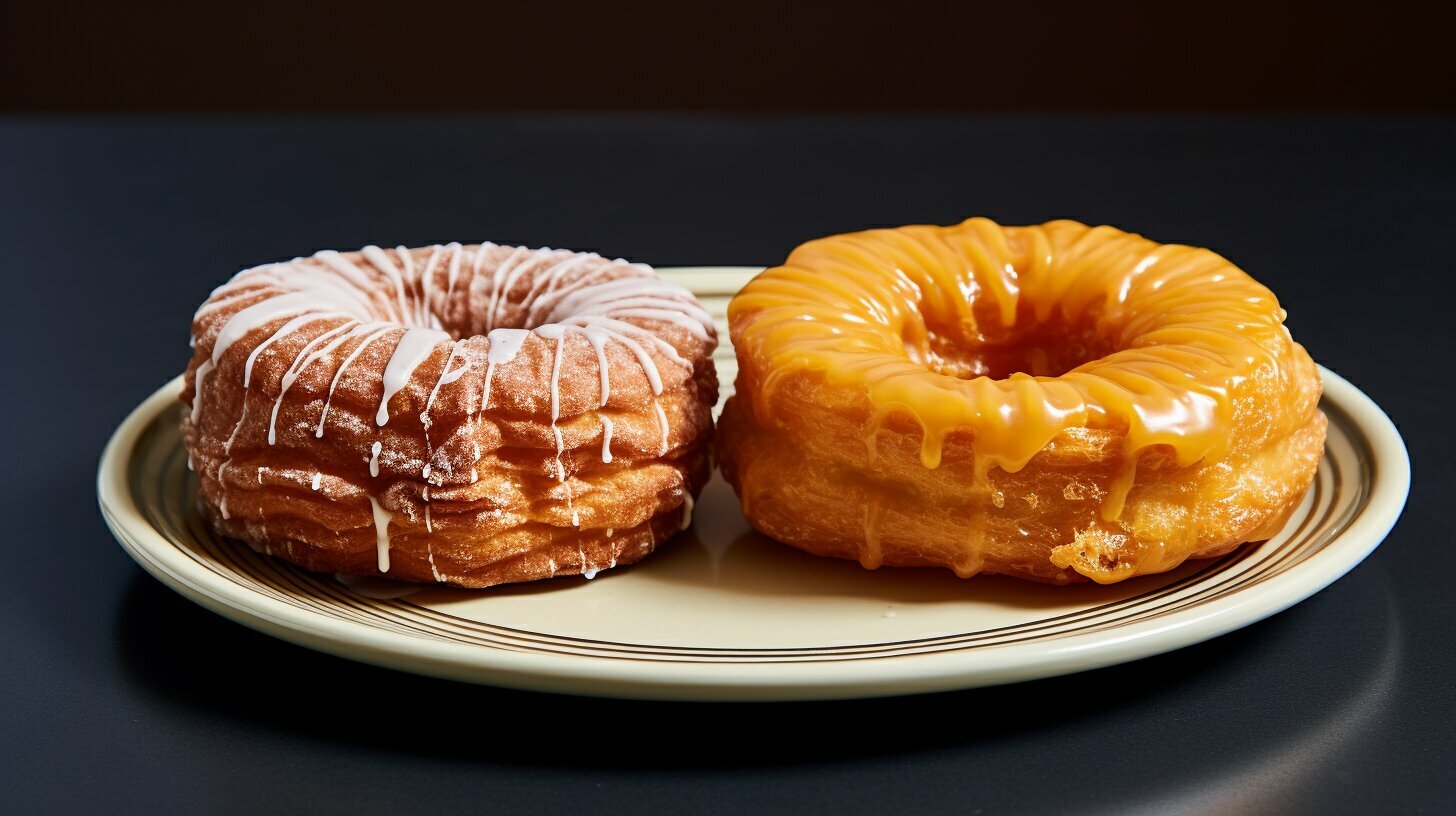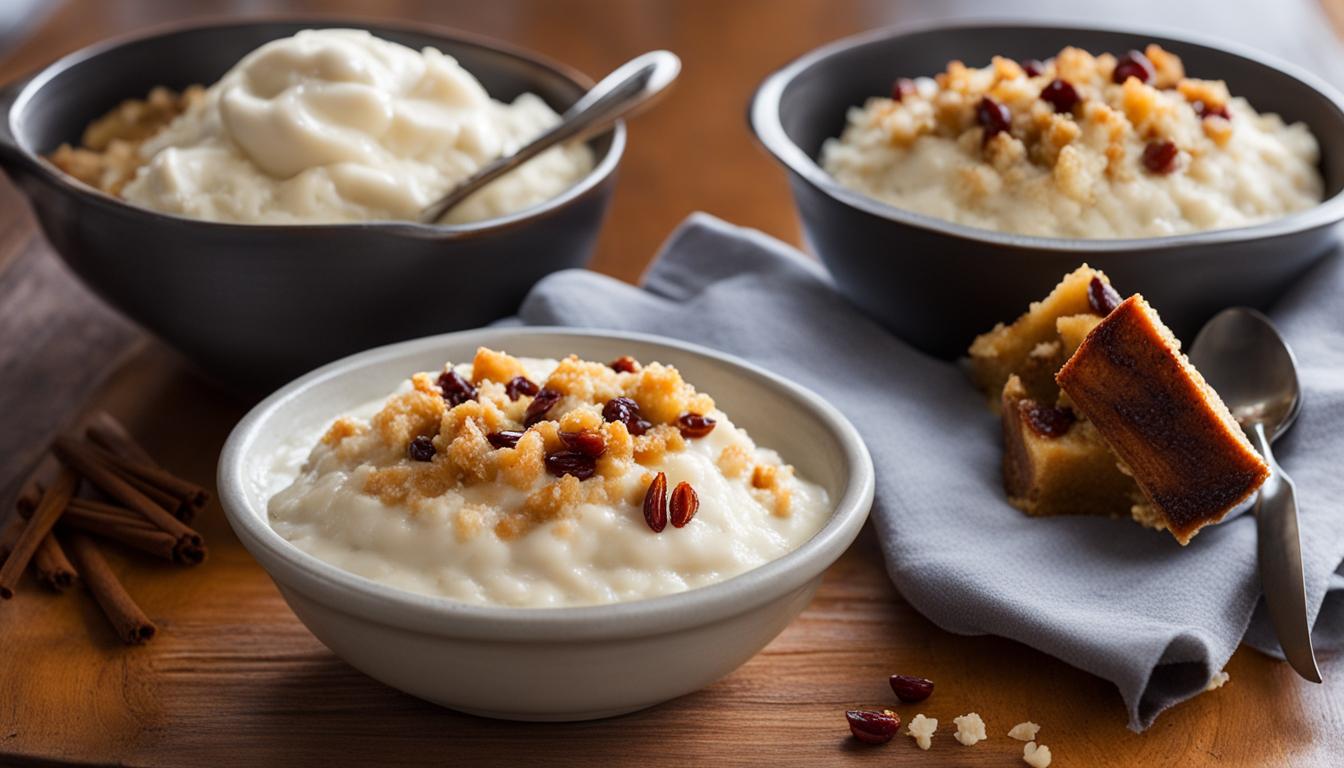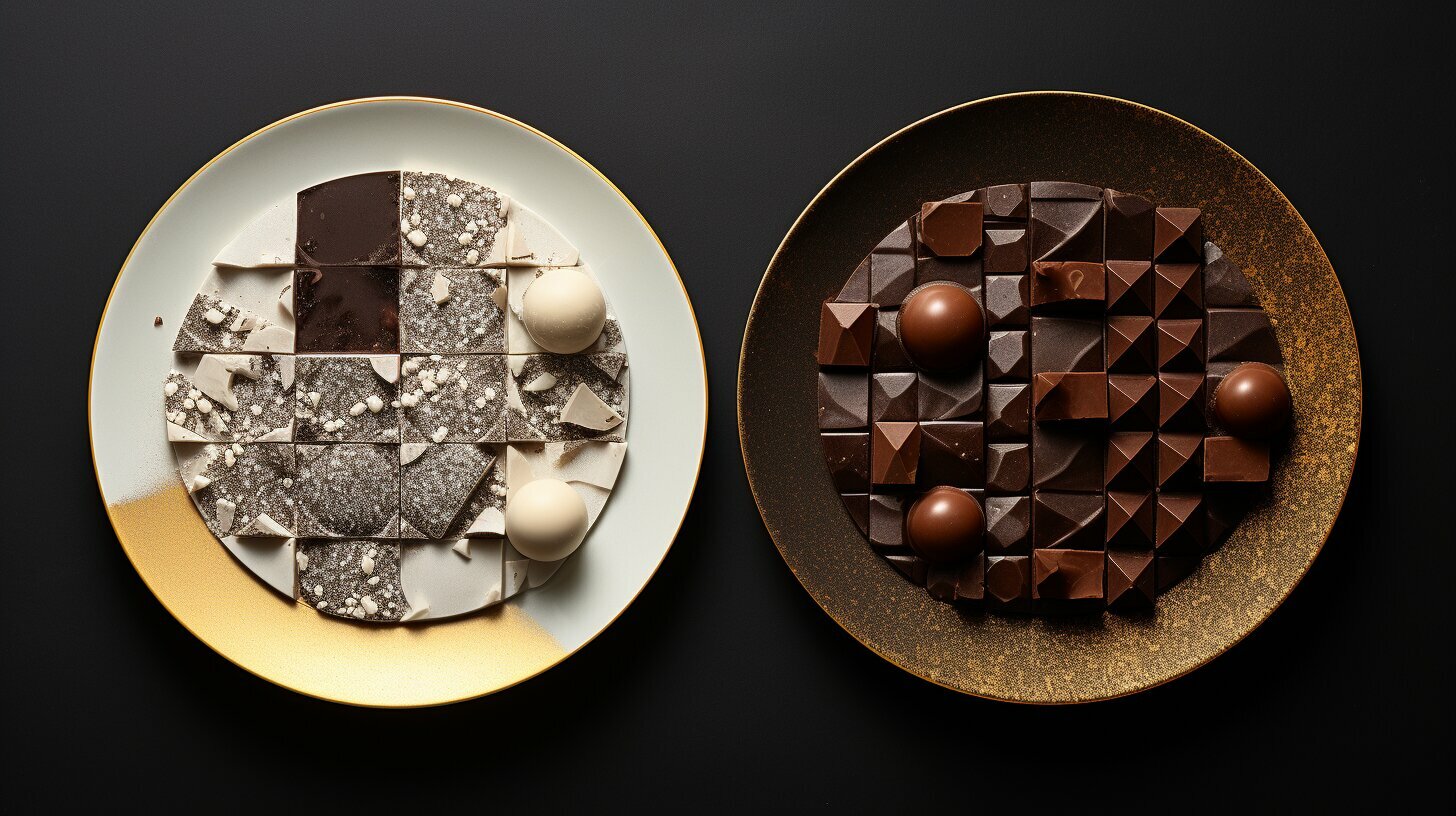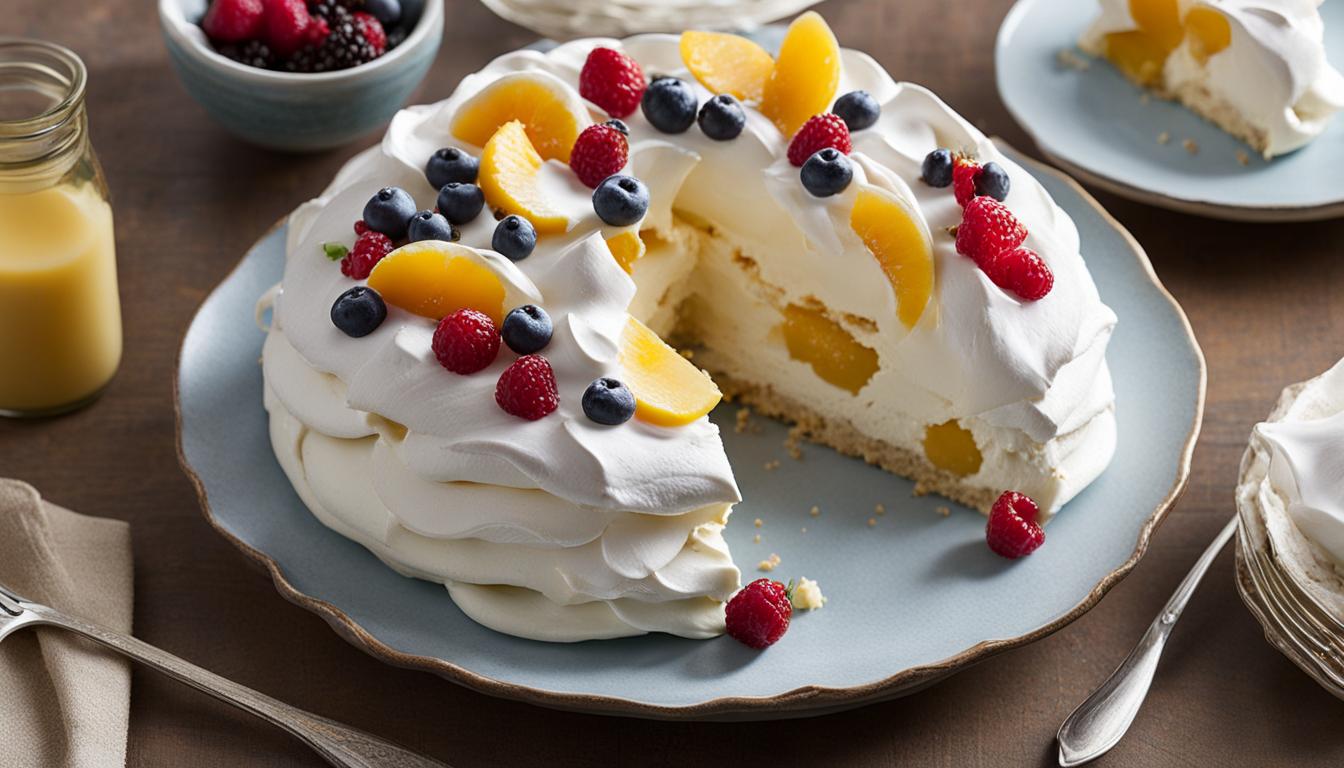Donuts and cronuts are two of the most iconic pastries that have taken the world by storm. While both are fried, sweet, and delicious, they have distinct differences that set them apart. In this article, we will explore the key differences between donuts and cronuts, as well as examine their similarities and flavors.
If you’ve ever wondered what the difference is between donuts and cronuts, you’re not alone. While the two pastries may seem similar at first glance, there are some notable variations that separate them.
Key Takeaways
- Donuts and cronuts are both fried, sweet pastries that have distinct differences.
- Donuts are a traditional pastry that have been around for centuries, while cronuts are a more recent creation.
- While donuts are typically round and have a hole in the center, cronuts are croissant-shaped and made of laminated dough.
Donuts vs Cronuts: Exploring Similarities and Differences
When it comes to donuts and cronuts, there are many similarities and differences to consider. On one hand, both are delicious, sweet pastries that can be enjoyed at any time of day. However, there are some key differences that set them apart.
| Donuts | Cronuts | |
|---|---|---|
| Taste | Soft and fluffy with a crispy exterior | Flaky and buttery with a fried exterior |
| Appearance | Rounded shape with a hole in the center | Croissant-like shape with layers and a hole in the center |
| Ingredients | Flour, sugar, yeast, eggs, milk | Croissant dough, butter, sugar, eggs, pastry cream |
The taste of a donut is often described as soft and fluffy with a crispy exterior. The dough is made from flour, sugar, yeast, eggs, and milk, and can be flavored with a wide range of ingredients such as chocolate, vanilla, or fruit. On the other hand, cronuts have a flaky and buttery texture with a fried exterior, similar to a croissant. The dough is made from croissant dough and layered with butter, sugar, eggs, and pastry cream. This unique combination of ingredients creates a distinct taste that sets it apart from traditional donuts.
In terms of appearance, donuts are typically round with a hole in the center, while cronuts have a croissant-like shape with layers and a hole in the center. Both pastries are often topped with glazes, sprinkles, or other decorations to add extra flavor and visual appeal.
While both donuts and cronuts are indulgent treats, some may argue that cronuts are slightly healthier than donuts. This is because they are made with croissant dough, which is lower in sugar and calories than standard donut dough. However, it’s important to note that cronuts are still fried and contain a high amount of butter, so they should still be enjoyed in moderation.
In conclusion, while donuts and cronuts share some similarities in terms of their sweetness and appeal as tasty treats, there are also notable differences in their taste, appearance, and ingredients. Whether you prefer the classic taste of a donut or the unique flavor of a cronut, there’s no denying that both of these pastries are a beloved indulgent treat.
The Ingredients and Flavors of Donuts and Cronuts
Donuts and cronuts may have their differences, but one thing they have in common is their wide range of flavors. From classic glazed and chocolate frosted to more unique flavors like matcha and lavender, there’s a donut or cronut flavor for everyone.
| Donut Flavors | Cronut Flavors |
|---|---|
| Glazed | Vanilla Bean |
| Chocolate Frosted | Butter Pecan |
| Powdered Sugar | Passionfruit |
| Cinnamon Sugar | Maple Bacon |
| Boston Cream | Strawberry Rhubarb |
When it comes to ingredients, donuts and cronuts differ in their dough and laminated layers. While donuts are typically made with a yeast-based dough, cronuts are made with a laminated dough similar to croissants. The layers of butter and dough give cronuts their flaky texture.
Donut dough is usually a mix of flour, sugar, milk, eggs, and yeast, while cronut dough includes similar ingredients plus butter for the laminated layers. Flavors are often added through glazes or fillings, which can range from fruity to savory.
As pastry chef Dominique Ansel, the inventor of the cronut, says, “there’s no limit to imagination when it comes to flavors.”
Some unique donut and cronut flavors include:
- Matcha
- Blueberry Lemon
- Red Velvet
- Peanut Butter and Jelly
Overall, whether you prefer the classic flavors of a donut or the flaky layers of a cronut, there’s no denying the creativity and variety in both.
Are Cronuts Healthier Than Donuts?
When it comes to health, let’s face it, neither donuts nor cronuts are exactly a health food. However, there are some factors to consider when determining which pastry is the healthier option.
Calories: On average, a cronut contains fewer calories than a donut. A typical cronut has around 350-400 calories, while a standard donut comes in at around 450-500 calories. However, this can vary depending on the size and specific ingredients used.
Ingredients: Both donuts and cronuts are made with a lot of sugar and fat. However, cronuts tend to have a higher fat content than regular donuts due to the croissant layers. Additionally, some cronuts may be made with artificial flavors and preservatives. It’s essential to consider the type of fat used as well. Trans-fats or hydrogenated oils are often found in donuts, which have been linked to heart disease and other health problems.
Portion size: One way to enjoy a donut or cronut without going overboard is by portion control. It’s easy to eat an entire pastry, but it’s better to split it with a friend or only have half and save the rest for later.
Overall, neither donuts nor cronuts should be consumed regularly as part of a healthy diet. However, if you’re looking for a special treat, a cronut may be the slightly better option due to its lower calorie count. But, it’s crucial to consider the specific ingredients used and practice portion control.
Conclusion
In conclusion, donuts and cronuts may appear similar at first glance, but there are distinct differences between the two. While donuts have been a favorite pastry for many years, cronuts have taken the world by storm in recent years, captivating people’s taste buds with their unique texture and exciting flavors.
We’ve explored the many ways in which donuts and cronuts differ, from their ingredients to their taste profiles, and even their perceived health benefits. It’s clear that both pastries have their strengths and weaknesses, and the choice between the two ultimately comes down to personal preference.
Difference Between Donuts and Cronuts
In summary, the main difference between donuts and cronuts is their texture. Donuts are soft and chewy on the inside, while cronuts are flaky and crispy. Additionally, cronuts are typically made with croissant dough, which gives them a more buttery taste and a light, airy texture.
Regardless of which pastry you prefer, both donuts and cronuts are a delicious treat that can be enjoyed any time of day. Whether you’re in the mood for a classic glazed donut or a trendy cronut flavor like matcha or birthday cake, there’s something for everyone to enjoy. So go ahead and indulge in your favorite pastry – you deserve it!
FAQ
Q: What is the difference between donuts and cronuts?
A: Donuts are a traditional fried pastry made from dough, while cronuts are a hybrid pastry that combines elements of croissants and donuts.
Q: How do donuts and cronuts taste different?
A: Donuts typically have a sweet and doughy taste, while cronuts have a flaky and buttery taste due to their croissant-like layers.
Q: Are cronuts and donuts made with the same ingredients?
A: While both pastries share some common ingredients like flour and sugar, cronuts usually incorporate butter and croissant dough into their recipe, giving them a unique texture and flavor.
Q: What flavors can you find in donuts and cronuts?
A: Donuts come in a wide variety of flavors such as chocolate, glazed, jelly-filled, and cinnamon sugar. Cronuts also offer a range of flavors, with popular options including vanilla, chocolate ganache, and fruity fillings.
Q: Are cronuts healthier than donuts?
A: Neither cronuts nor donuts are considered healthy options as they are both fried pastries high in calories and fat. It’s important to enjoy them in moderation as indulgent treats.
 Skip to main content
Skip to main content


